How to Read an ISO Shipping Container’s CSC Plate
 Paige Welsh | Nov 21, 2018
Paige Welsh | Nov 21, 2018
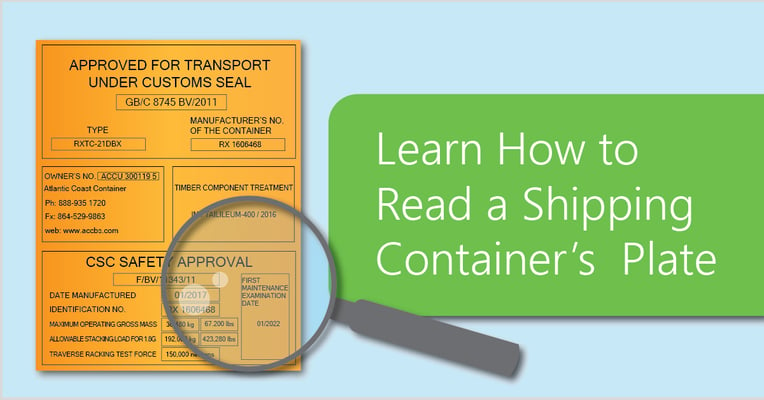
Every ISO shipping container comes with a steel or brass plate called the CSC plate. The information on the CSC plate communicates key details about the container’s life history, but the jargon can be difficult to translate for the uninitiated. Here’s our point by point explanation on how to read a CSC plate, so you and code officials can understand the safety standards the container has been held to.
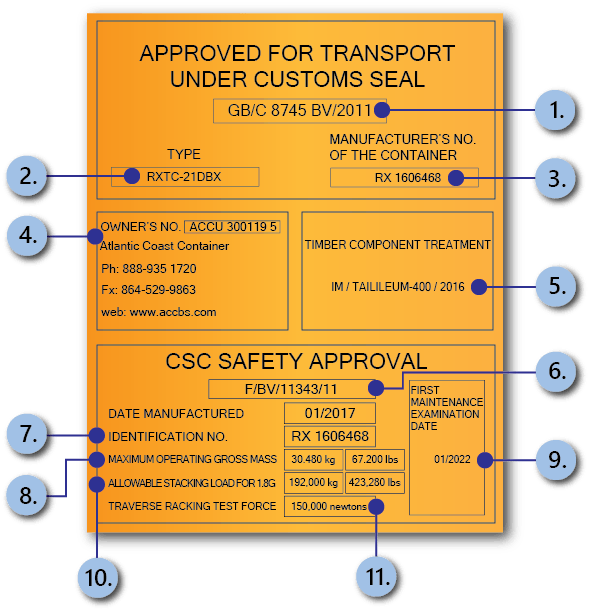
1. The Edition of CSC Rules the Container Was Approved Under.
CSC stands for The International Convention for Safe Containers, a set of container regulations determined by the International Maritime Organization, an agency under the purview of the United Nations. All ISO shipping containers must comply with the standards and inspections set forth by the CSC. Different classification societies around the world take on the responsibility of inspecting containers for CSC compliance.
The first piece of information on the CSC plate is the set of codes under which the container was approved. Generally, the first letter before the slash or hyphen is the country code. The inspection criteria of a specific classification society follows, and then the approval year of those criteria.
In the graphic above, GB is the country code for the UK, and BV stands for Bureau Veritas, a classification society in France.
The exact formatting of this information varies from plate to plate, but if you become familiar with common country and classification society codes, you can glean by whom and where the container was approved.
2. Type
Container manufacturers create lines of container models. This code indicates container’s manufacturing model.
3. Manufacturer’s No. of the Container
This is the ID number that the manufacturer assigned to the container. Sometimes CSC classification societies use this number as the container’s general ID number—more on that later.
4. Owner's No.
This is the number the owner uses to identify their containers. The owner is usually the organization that operates the container fleet and coordinates shipping. Sometimes the container’s manufacturer is also the owner. For example, Atlantic Coast Container is both the manufacturer and the owner of the container represented in the graphic. If the manufacturer and the owner are separate entities, there may be contact information for each.
5. Timber Component Treatment
Container floors are lined with marine grade plywood or bamboo. This part of the plate indicates whether the floors were treated with basileum, radaleum, or Talileum-400.
6. Classification Society Approval Number
This is the id number for the approval process. It is similar to the first code at the top of the container, but it is the id number for the individual action of approving a single container as opposed to the general rules it was approved under.
7. Identification No.
This is the unique ID number assigned by the classification agency to track the container’s previous inspections. You can think of it as the equivalent of the VIN (Vehicle Identification Number) on a car.
8. Maximum Operating Gross Mass
The maximum operating gross mass is the maximum safe weight or mass of a container loaded with its contents. The weight of the container itself is included in the gross mass.
9. First Maintenance Examination Date
The first maintenance examination date is when the container needs to be reinspected by a classification society. Think of it as the container’s check-up appointment.
10. Allowable Stacking Load for 1.8 G
1.8 Gs is the force of gravity we typically experience multiplied by 1.8. Think about how if you’re going up an elevator you feel heavier. That heaviness is the added G-force of going up against gravity. Containers may experience G-forces higher than 1 when ships bob up and down at sea. Thus, this number indicates how much weight can be safely stacked on top of a container even if the container experiences 1.8 Gs at sea.
11. Transverse Racking Test Force
This is the amount of force that can be applied to the top edge of the container before the frame warps.
The CSC plate is a strong foundation for assessing whether a shipping container is safe for use in a shipping container structure. Its presence ensures the container has achieved rigorous standards for ISO compliance that can be translated into structural properties for building. Whether you’re buying a container for storage or a complex structure, we recommend locating the CSC plate and reading up on the container’s journey.
To learn more about containers, check out our other educational resources:
SUBSCRIBE
- Shipping Container Modifications
- How-Tos
- Workspace
- Commercial Construction
- Multi-Container Buildings
- Storage Solutions
- Industrial Enclosures
- Bathrooms & Locker Rooms
- Oil & Gas
- Climate Control
- Green Building
- Living Space
- Industry Insight
- Military & Training Facilities
- Water Treatment Solutions
- Energy
THINK INSIDE THE BOX®
WITH OUR BLOG
Get everything from shipping container basics, to detailed how-tos and industry news in our weekly blog. Stay inspired and subscribe!
RELATED BLOGS
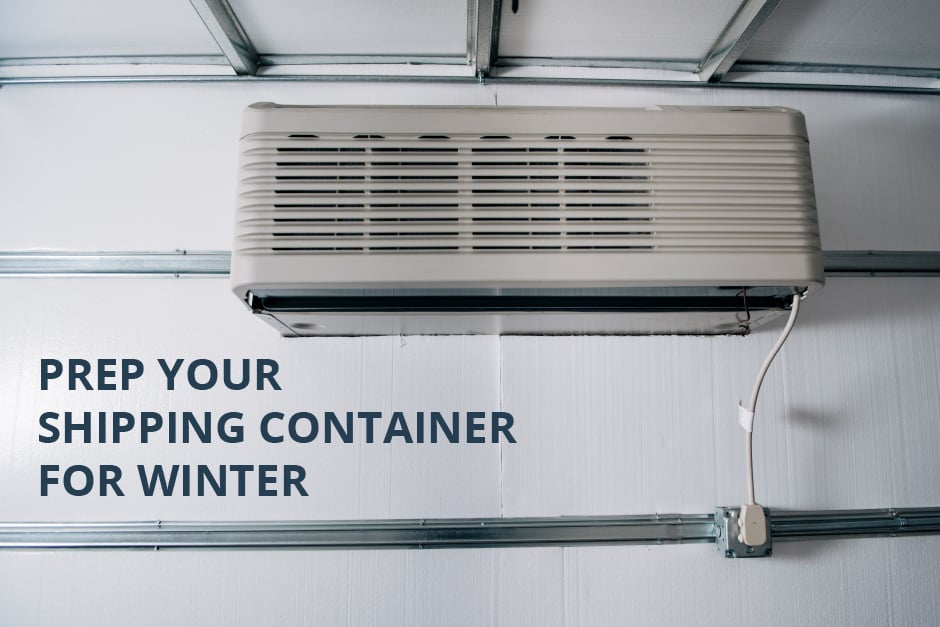
7 Shipping Container Maintenance Steps to Help You Prep for Winter
Marissa Morin | Jan 6, 2021 | 2 min read
READ MORE
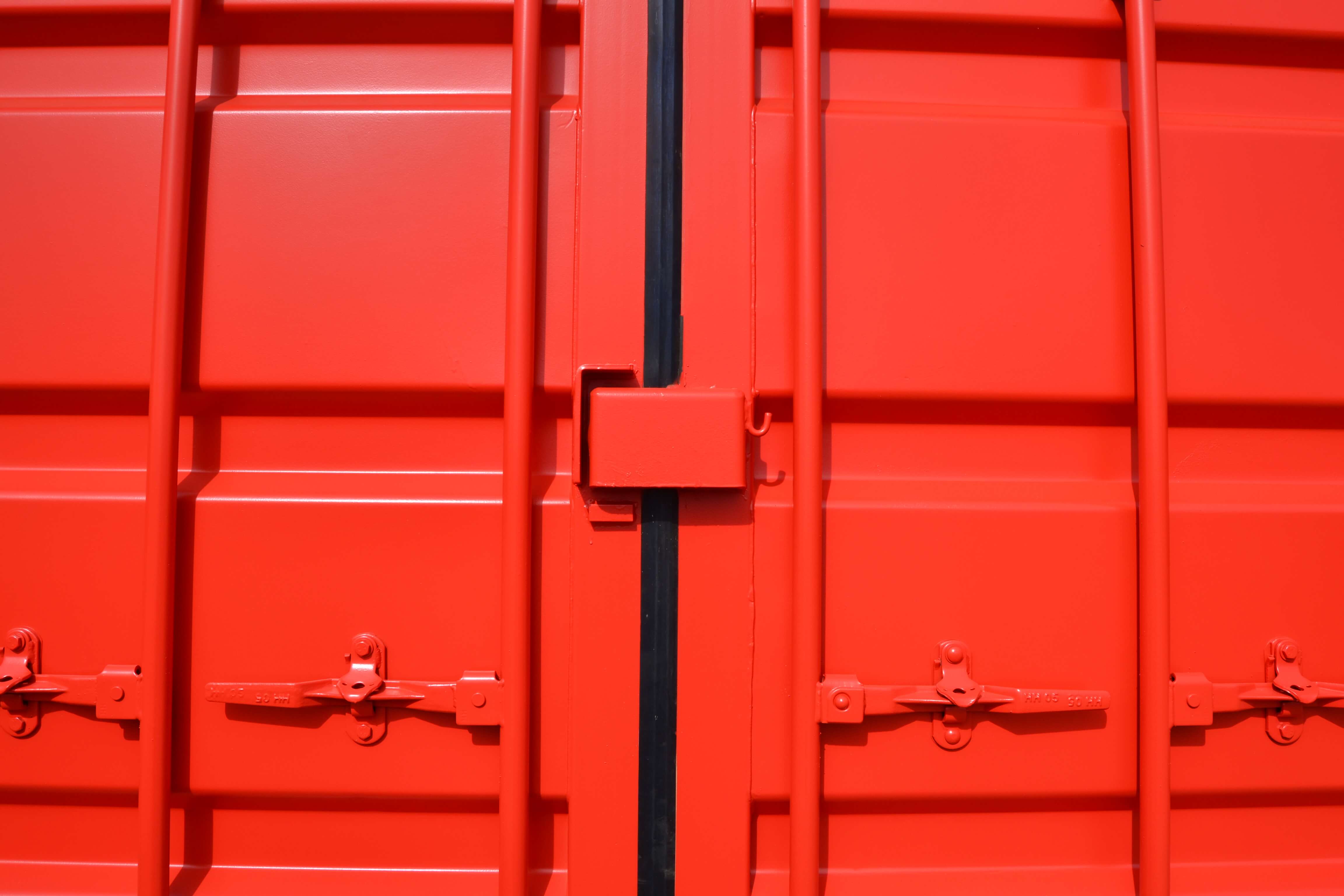
How to Secure a Shipping Container: Peace of Mind with Container Lock Systems
Marissa Morin | Apr 6, 2022 | 3 min read
READ MORE
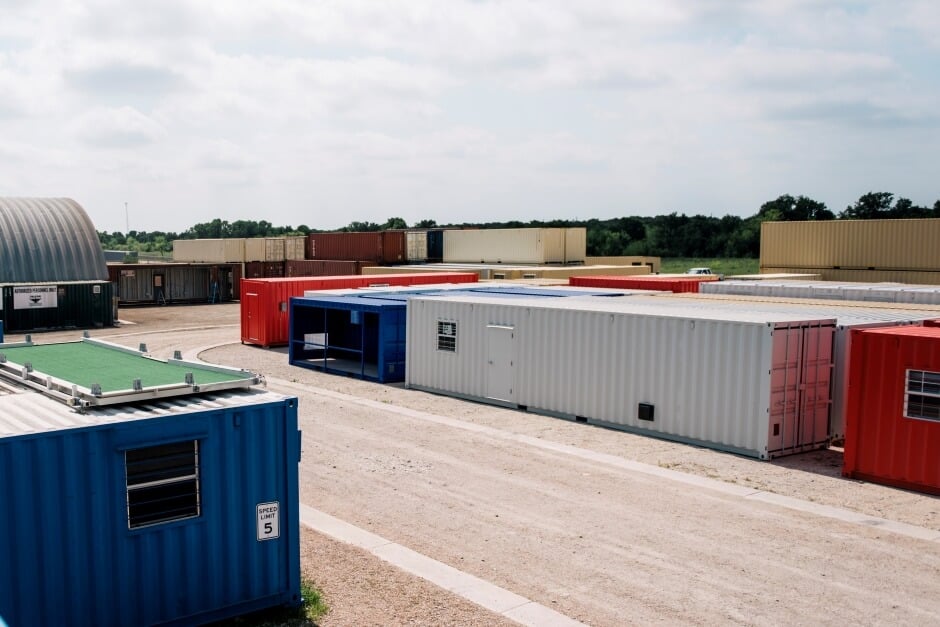
Guide to Shipping Container Sizes & Types
Becca Hubert | Dec 13, 2023 | 4 min read
READ MORE
